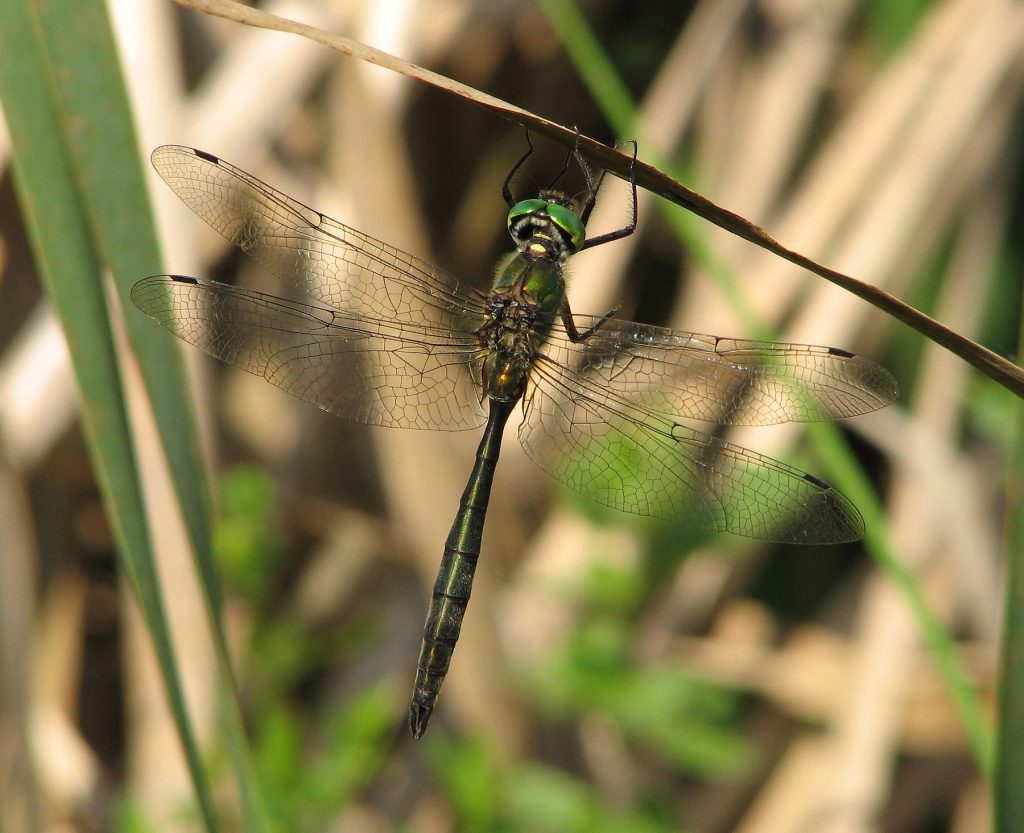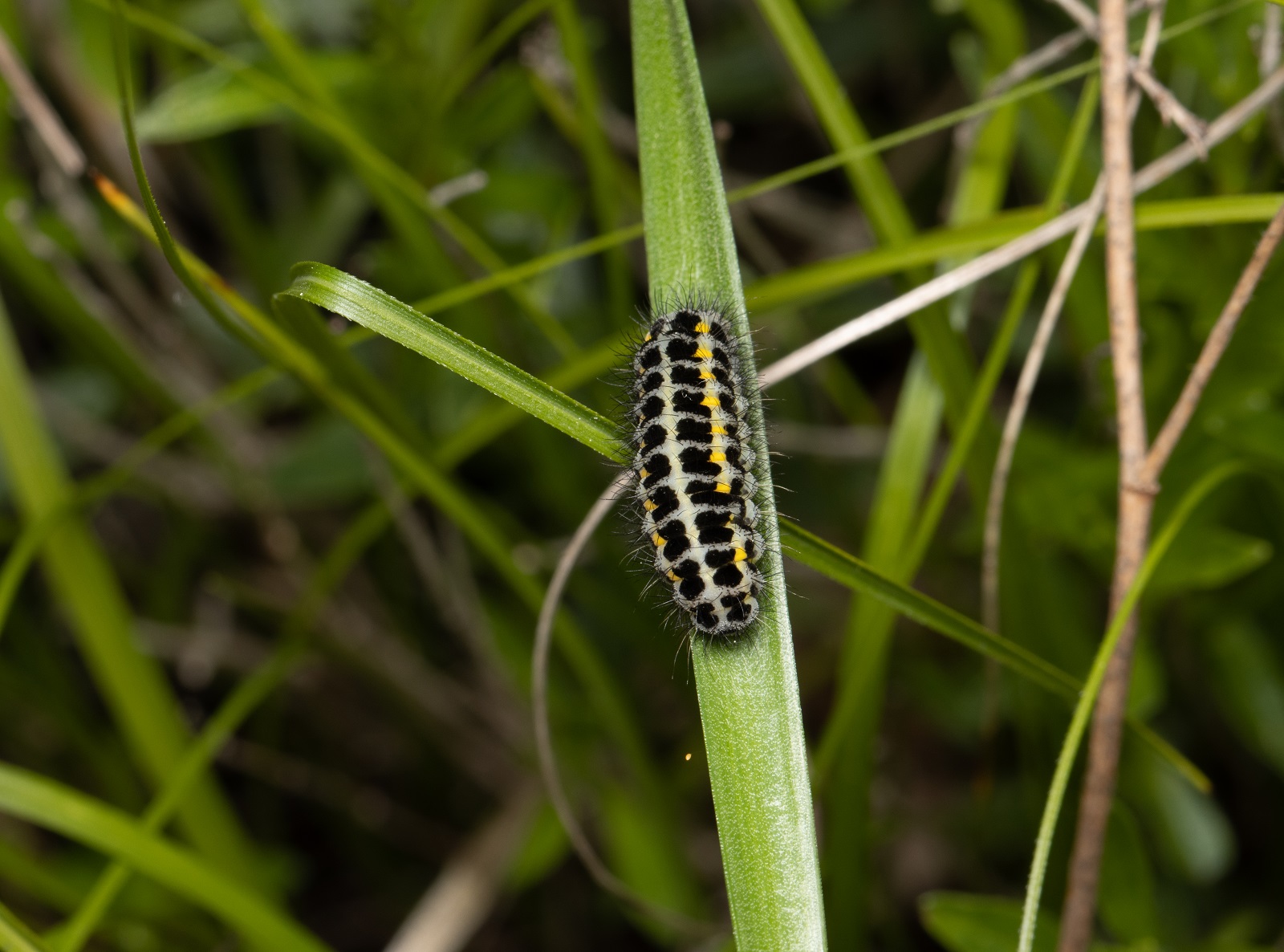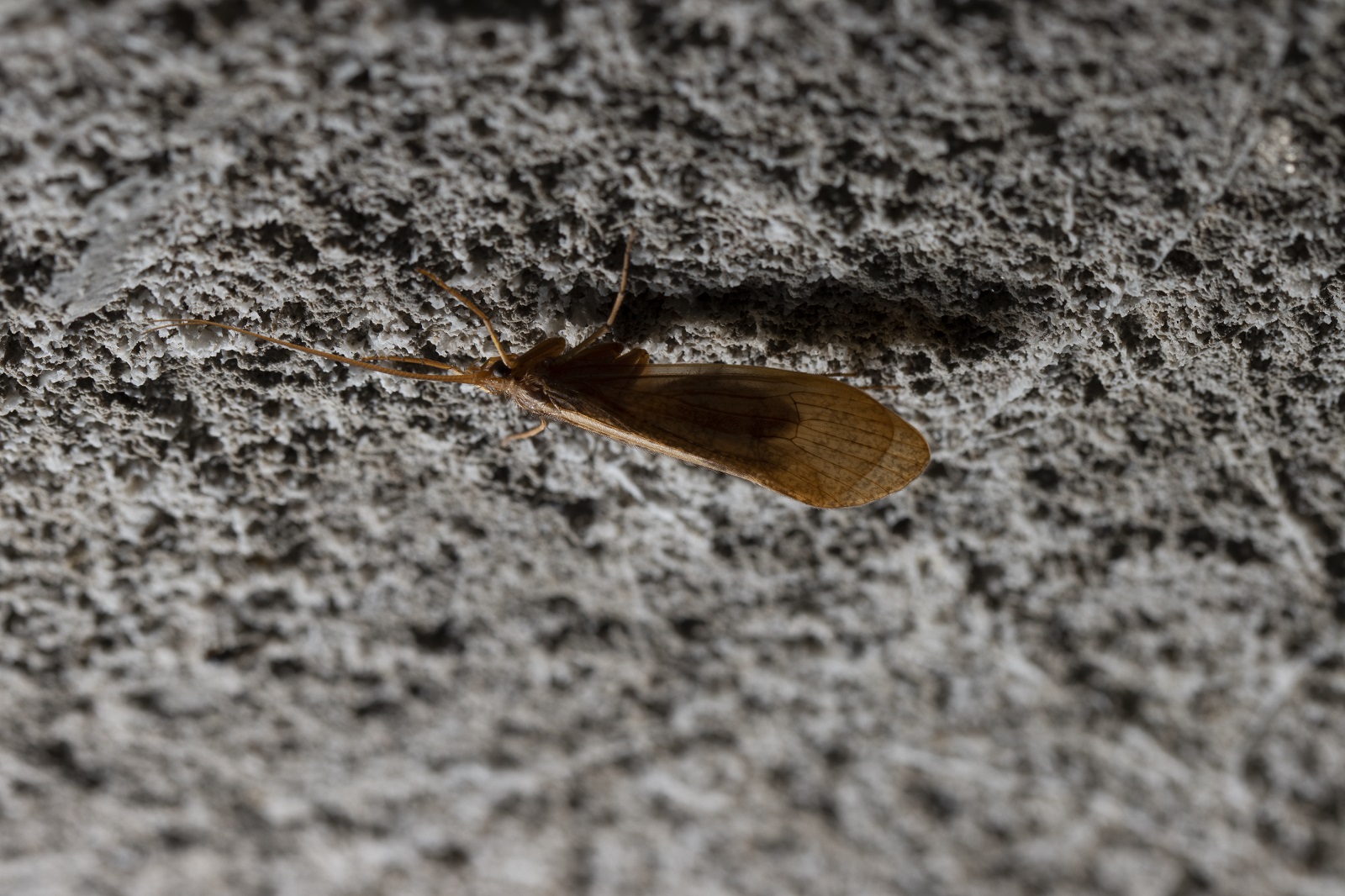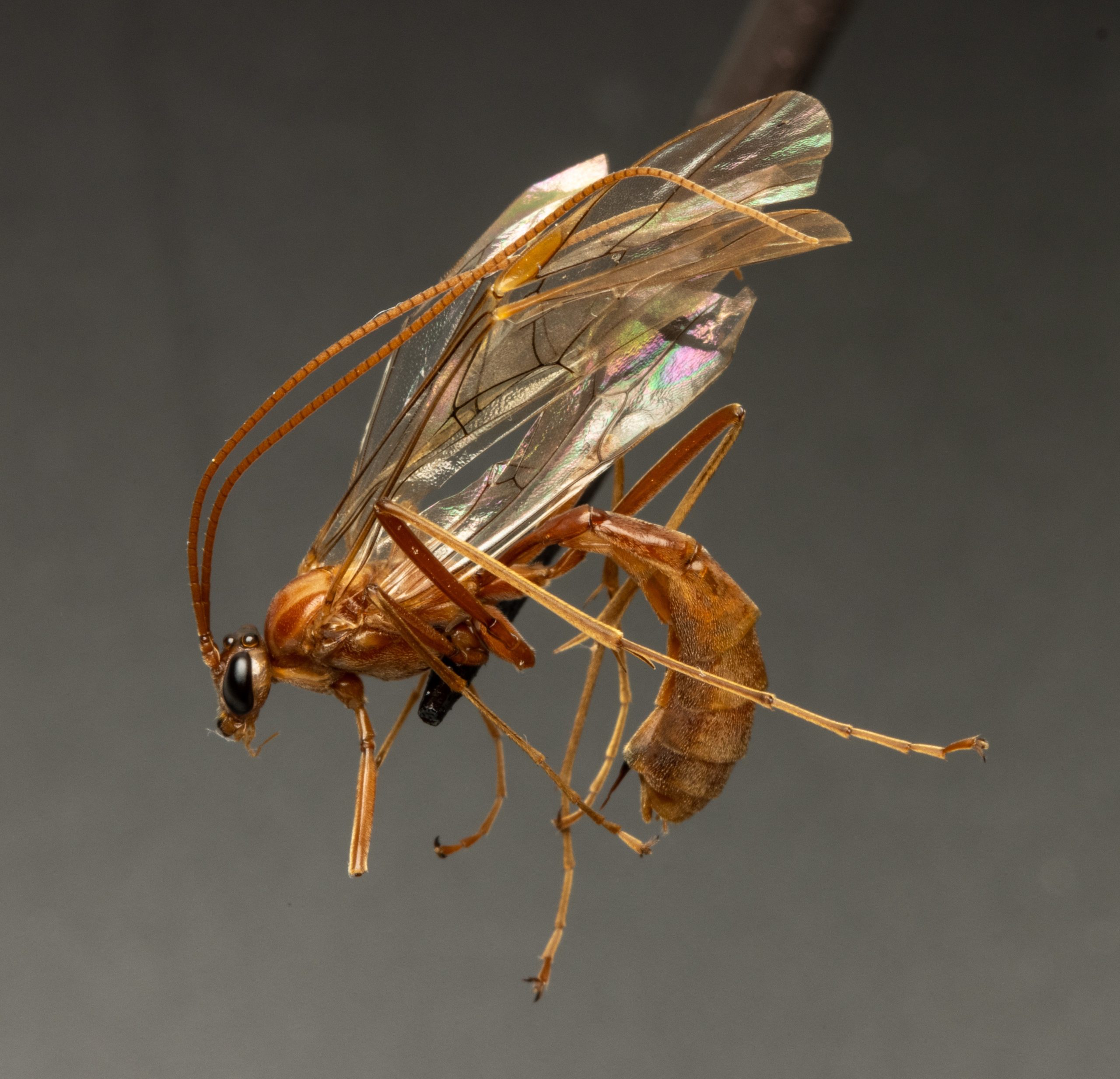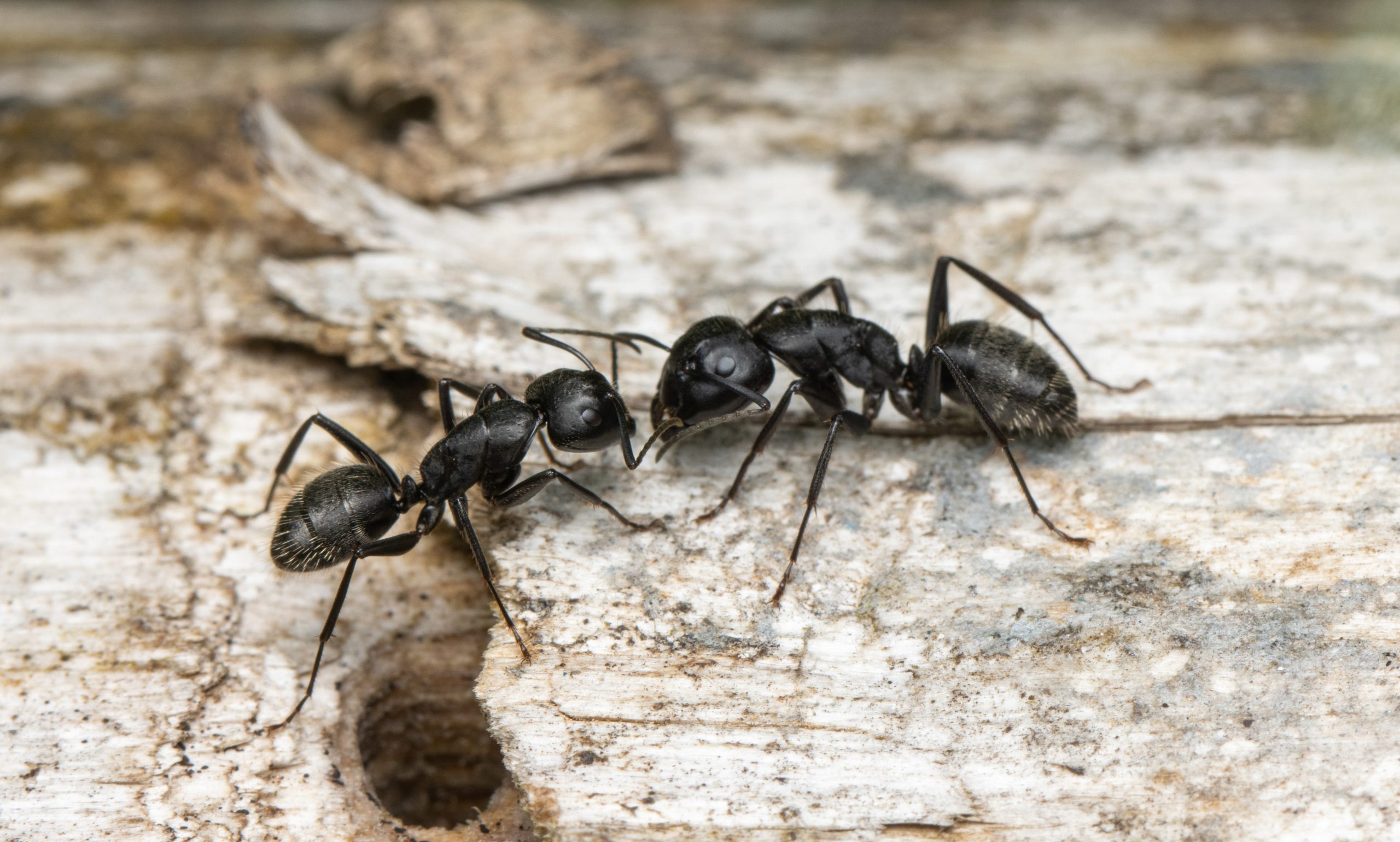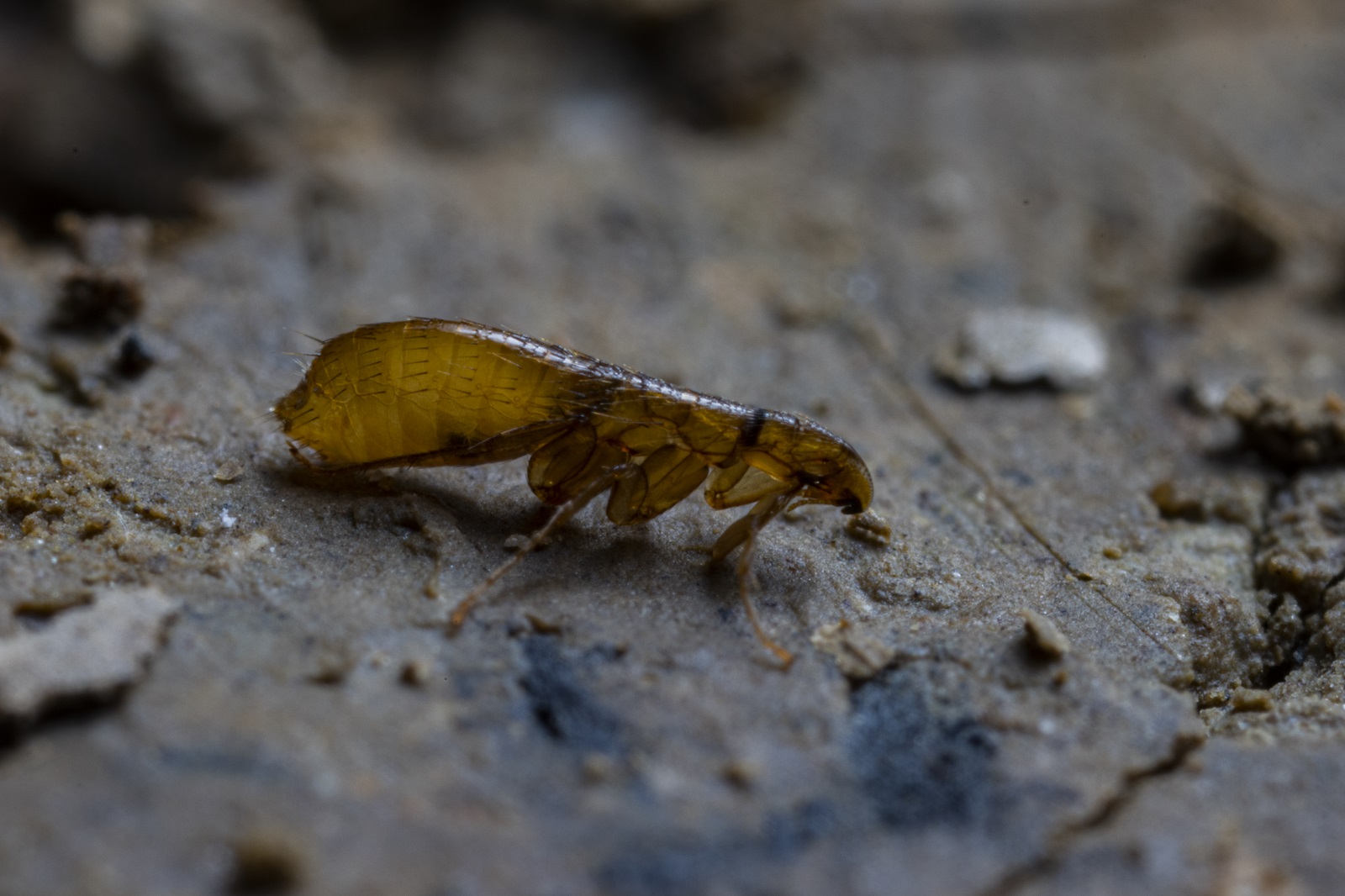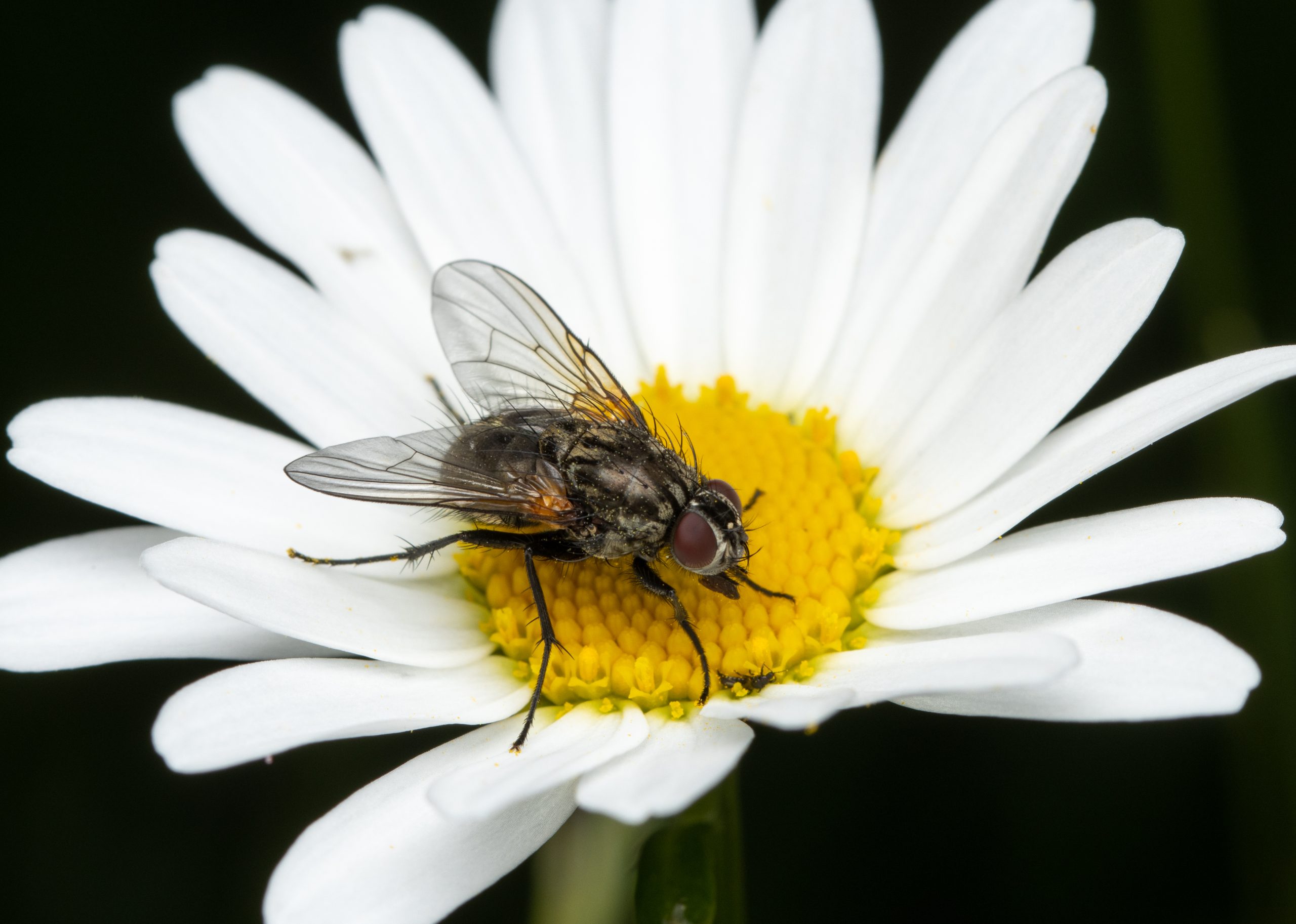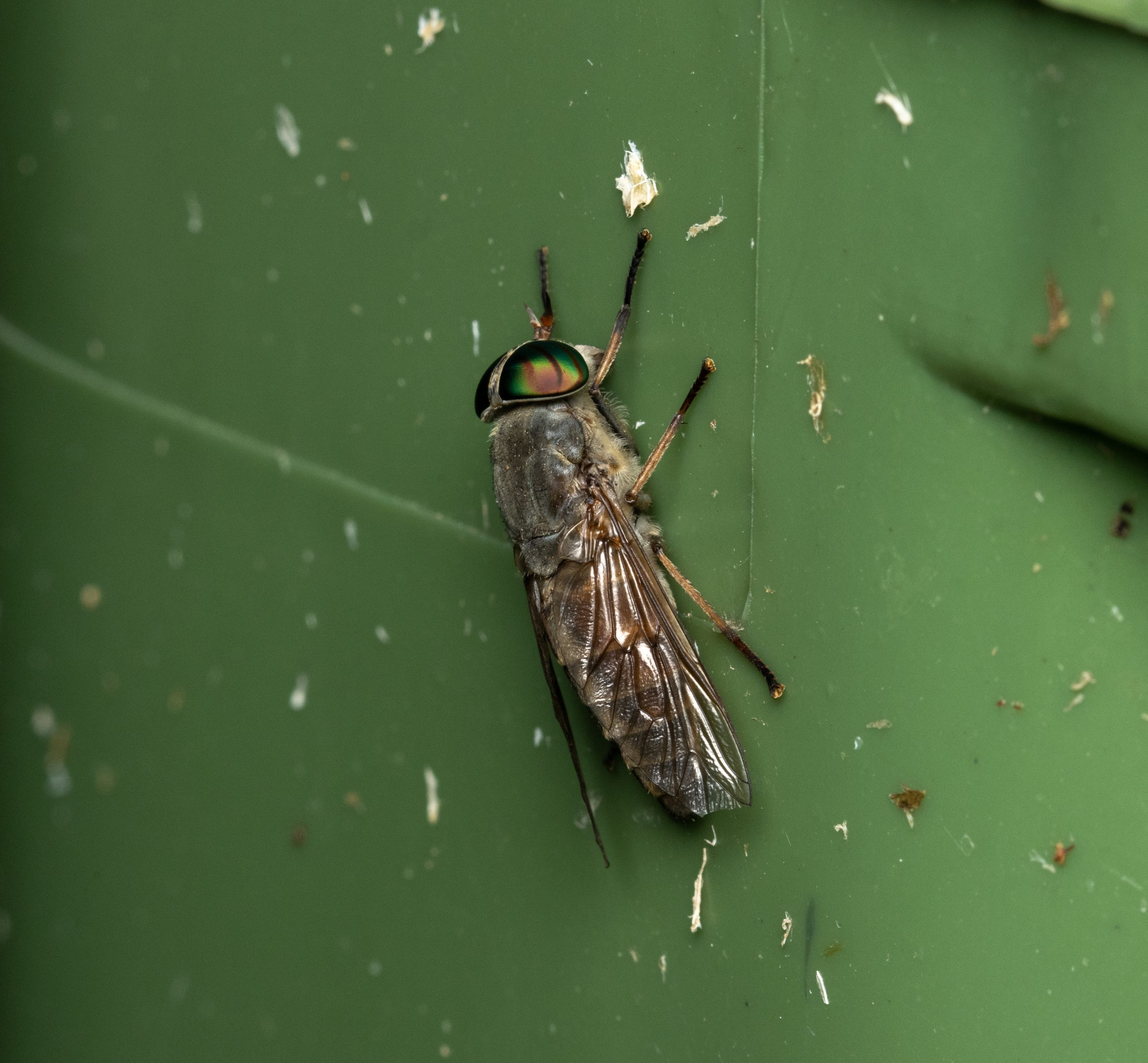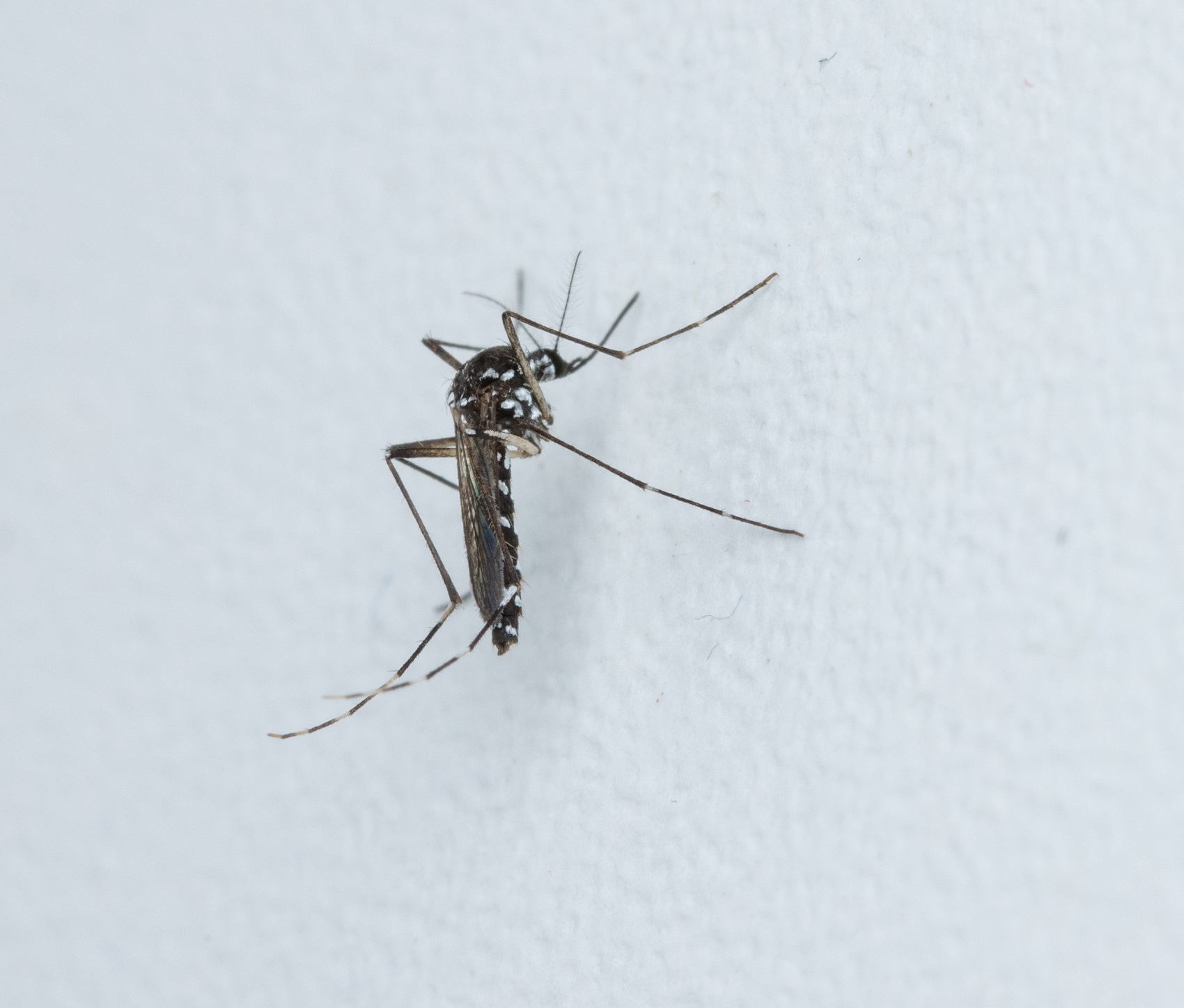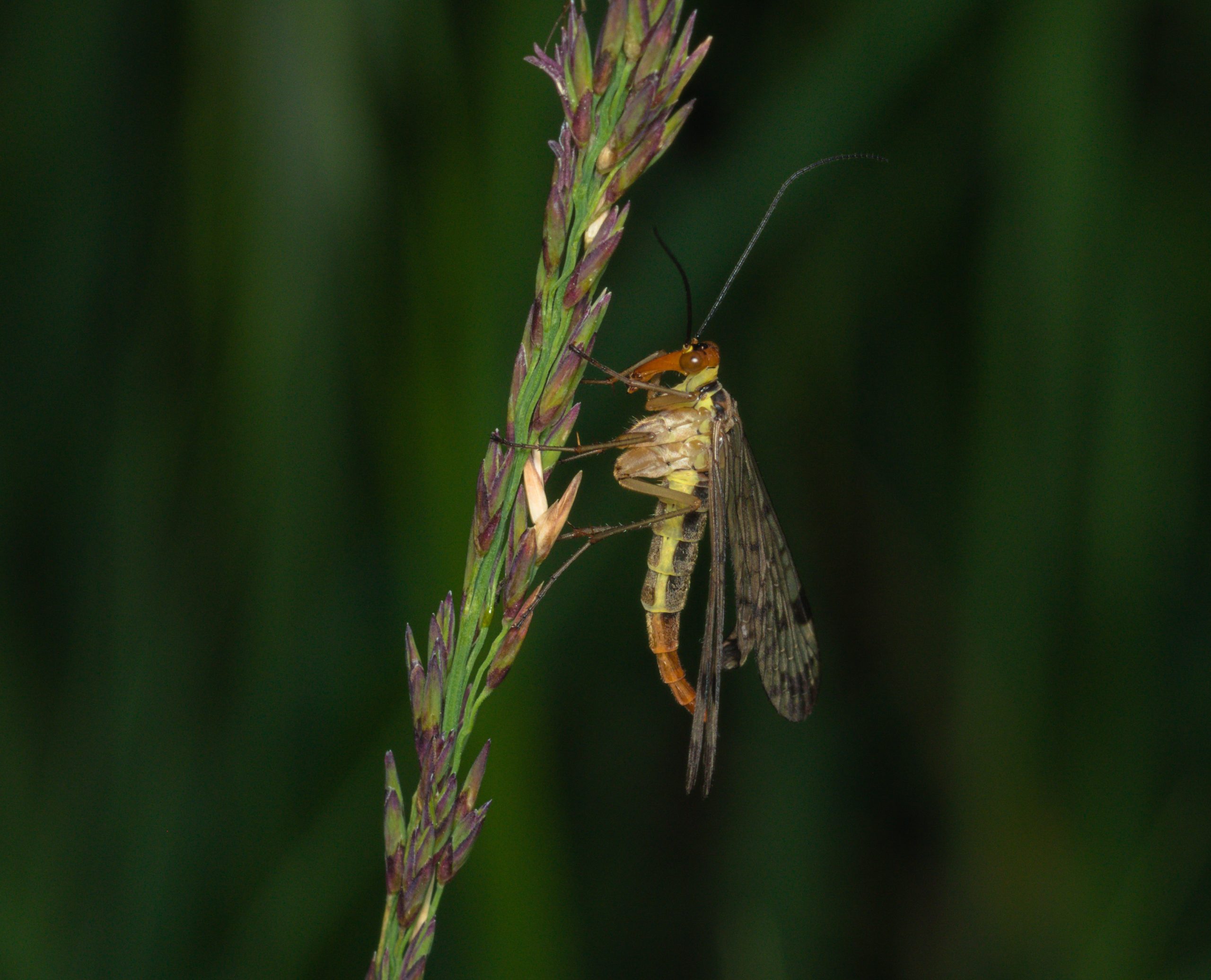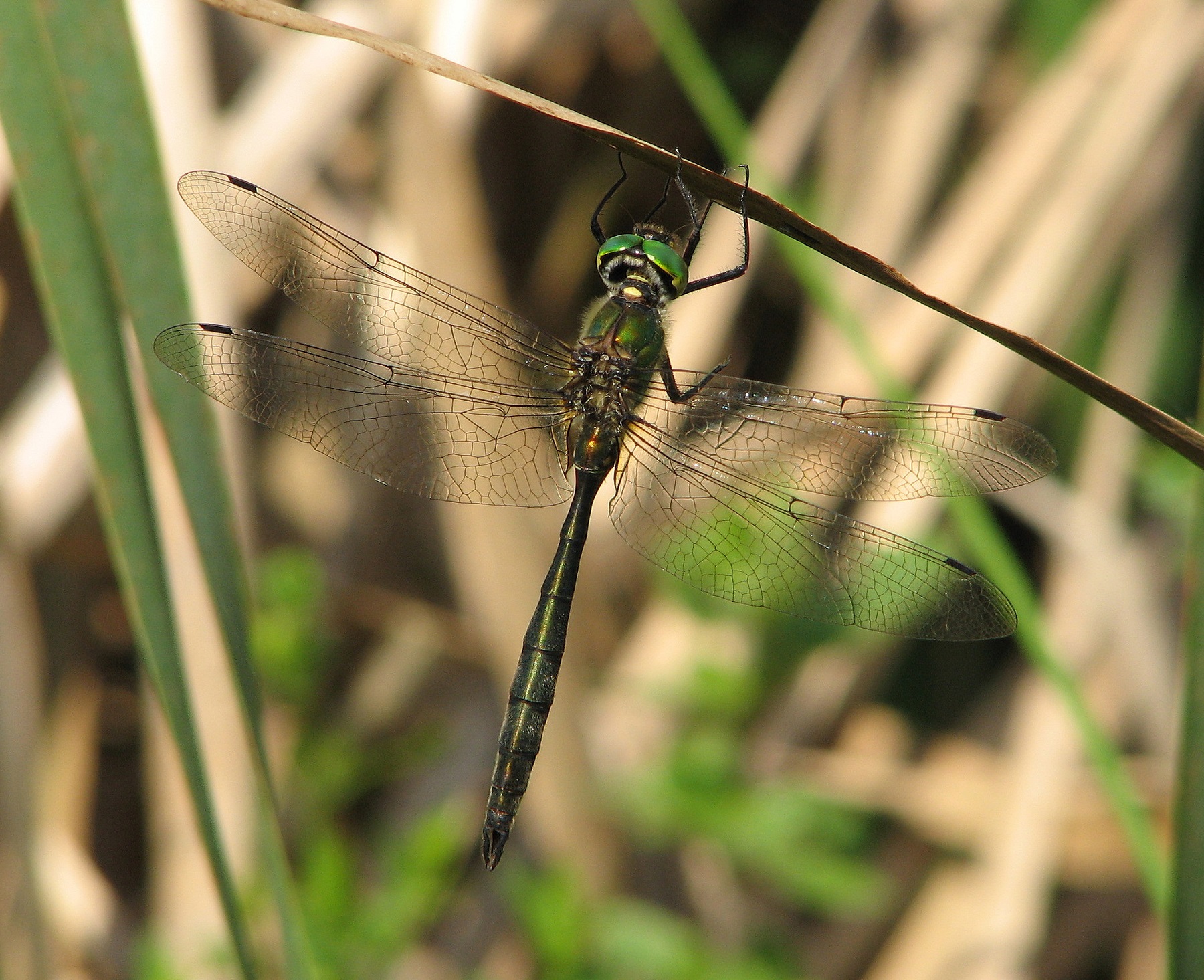
- Insects
Anisoptera
In dragonflies (Anisoptera) the second pair of wings is characteristically wider at its base than the first pair. Both pairs of wings are membranous, densely veined and have distinct elongated pterostigmata (groups of thickened and dark coloured wing cells) near their tips. At rest they do not fold their wings like damselflies but hold them flat. The body of dragonflies is more robust than the body of damselflies, and usually brightly colored often iridescent or metallic. The body as in other insects consists of a head (cephalon), thorax and abdomen. They are fast and agile fliers. Larger dragonflies can grow up to 13 centimeters in length.
The head is wide bearing a pair of large compound eyes that are fused in the middle. The head also carries a pair of very short antennae and strong mouthparts adapter for biting and chewing of the prey.
The thorax is comprised of three segments. The first segment (prothorax) is small. The second (mesothorax) and third (metathorax) segment are large and fused into a robust unit, which contains attachment sites of strong flying muscles of both pairs of wings originating at these two segments.
The abdomen is long and slender and composed of ten segments without appendages. The males have curved remnants of abdominal appendages on the tenth segment that are used to grasp the female during mating. On the second abdominal segment they have genital organs. The females have a genital opening at the eighth segment of the abdomen.
Dragonflies are present on all continents except Antarctica. They inhabit very diverse habitats, which are generally associated with freshwater bodies. Some species prefer flowing waters while others prefer standing water, in which their predatory larvae develop.
Dragonflies are hemimetabolous insects. Their larvae also called nymphs catch prey with extensible labium (fused second maxillae), which functions as a harpoon for catching other water insects, tadpoles and small fish. Dragonfly nymphs have more robust and stubbier bodies than the damselfly nymphs. At the end of their abdomen, they also do not have three feather-like gills as damselfly nymphs have. They breathe with rectal gills which are located inside the abdomen. The adults are excellent fliers that catch prey in flight.
More photos
Related arthropods

Authors
- Urban Bogataj,
- Gregor Bračko,
- Teo Delič,
- Cene Fišer,
- Žiga Fišer,
- Rok Kostanjšek,
- Rudi Verovnik,
- Miloš Vittori,
- Valerija Zakšek.
Students Vito Ham, Vesna Jurjevič, Gaj Kušar, and Adrijan Samuel Stell Pičman also participated in the project.
